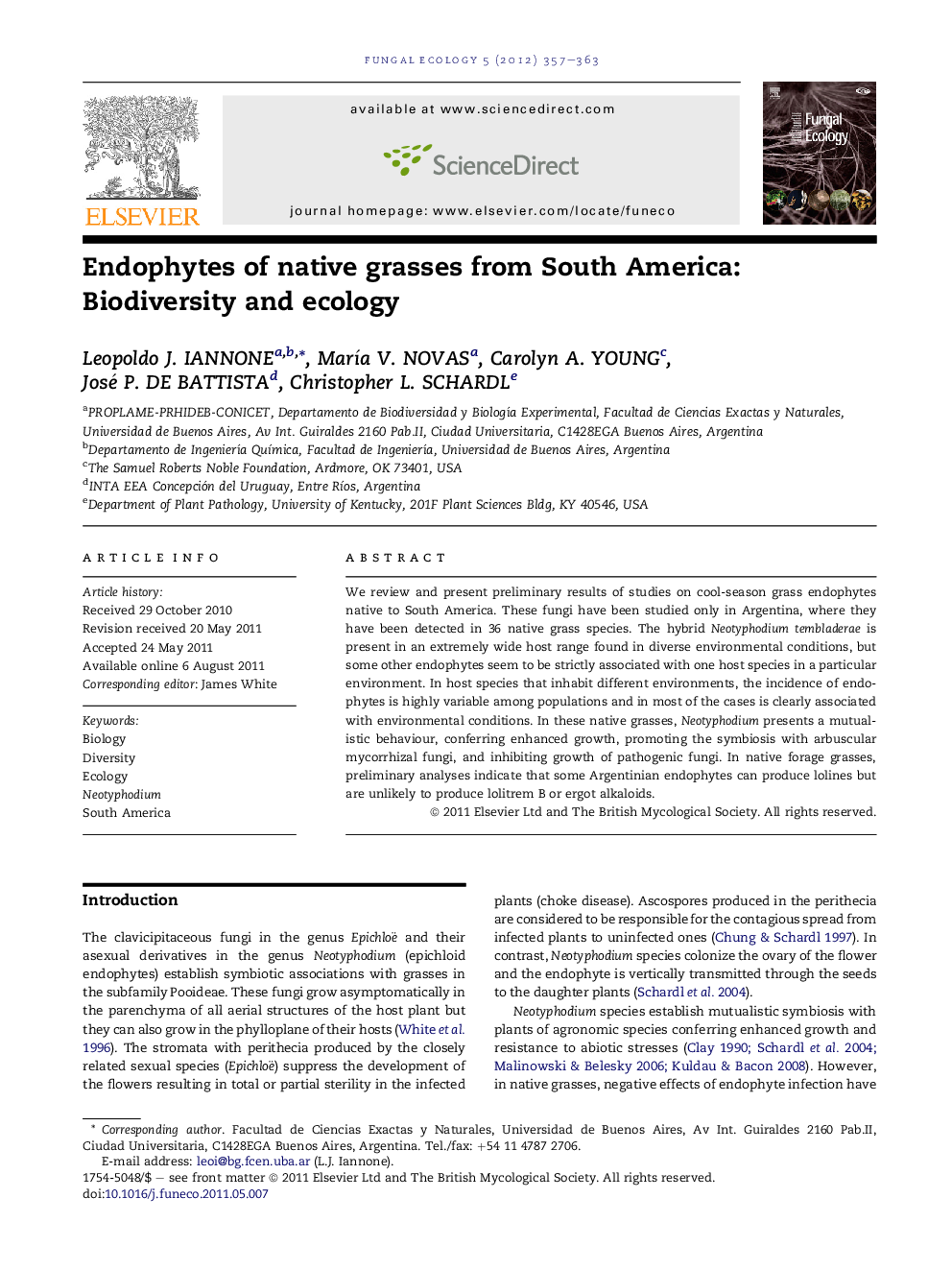| کد مقاله | کد نشریه | سال انتشار | مقاله انگلیسی | نسخه تمام متن |
|---|---|---|---|---|
| 2053877 | 1075580 | 2012 | 7 صفحه PDF | دانلود رایگان |

We review and present preliminary results of studies on cool-season grass endophytes native to South America. These fungi have been studied only in Argentina, where they have been detected in 36 native grass species. The hybrid Neotyphodium tembladerae is present in an extremely wide host range found in diverse environmental conditions, but some other endophytes seem to be strictly associated with one host species in a particular environment. In host species that inhabit different environments, the incidence of endophytes is highly variable among populations and in most of the cases is clearly associated with environmental conditions. In these native grasses, Neotyphodium presents a mutualistic behaviour, conferring enhanced growth, promoting the symbiosis with arbuscular mycorrhizal fungi, and inhibiting growth of pathogenic fungi. In native forage grasses, preliminary analyses indicate that some Argentinian endophytes can produce lolines but are unlikely to produce lolitrem B or ergot alkaloids.
► Neotyphodium endophytes were detected in 36 grass species from South America.
► Different Neotyphodium lineages were detected in many environments of Argentina.
► Endophyte incidence is associated with biotic and abiotic environmental factors.
► Endophytes promote mycorrhizal colonization and inhibit pathogenic fungi in vitro.
► Neotyphodium establishes mutualistic associations with native grasses from Argentina.
Journal: Fungal Ecology - Volume 5, Issue 3, June 2012, Pages 357–363